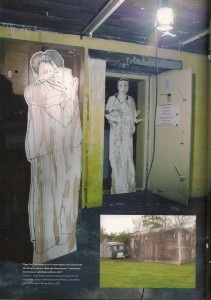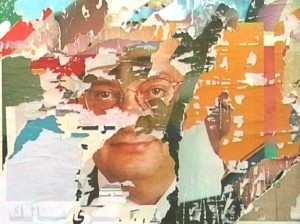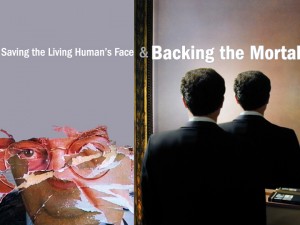 Pressemeddelelse:
Pressemeddelelse:
Stillingtagen, ansvar og modstand mod udsendelse af irakere!
Vi, elever fra Det Fynske Kunstakademi, samarbejdede med Odense Lufthavn i forbindelse med vores afgangsudstilling i 2007, med titlen “This could be the beginning of a beautiful friendship”. Vi skriver i forbindelse med at 22 irakere natten til onsdag d 2. september 2009 blev sendt ud af Danmark fra Odense Lufthavn. Vi er dybt berørt over hele situationen.
Vi var i 2007 meget glade for vores samarbejde med Odense Lufthavn i 2007 og trykte i den forbindelse et katalog, der er sendt ud i Danmark og mange steder i verden. Her indgår samarbejdet tydeligt og på katalogets forside er et billede af Odense lufthavn.
Som det fremgår af udstillingens titel “This could be the beginning of a beautiful friendship” handlede vores udstilling om, hvorvidt venskab på trods af forskellighed, baggrund og kultur kan finde sted.
Flere af værkerne på udstillingen handlede netop om krigen i Irak og de flygtninge, der nu er i klemme både i Danmark og i Irak, ydermere skrev Mikkel Bolt, lektor på KBH universitet i vores katalog om den hastigt voksende racisme og intolerance der breder sig i Danmark.
Da vi vågnede onsdag morgen med nyheden om, at 22 irakere var sendt ud af landet fra Odense Lufthavn, fik vi en meget mærkelig fornemmelse, følelsen af at mængder af spildt energi, initiativ og troen på, at fredelige ytringer og dialog på nogen måde har en virkning, synes håbløse lige nu.
Deltagelse i hjemsendelsen af irakere, der har ventet og håbet i op til 10 år og det at tvinge dem til at efterlade deres børn her, ser vi som en fravigelse fra individuelt ansvar og medmenneskelighed. Vi afholdt vores afgangsudstilling på det sted, hvor det har foregået, og vil hermed kraftigt markere at vi ikke bakker op om så kynisk og umenneskelig handling.
Citat Mikkel Bolt: Fra teksten: Alternative slutninger, krig kunst og kærlighed. Kataloget for afgangsudstillingen “This could be the beginning of a beautiful friendship”, Det Fynske Kunstakademi, afgangsudstilling 2007 i Odense Lufthavn:
”Et vanvittigt og surreelt scenarium udspiller sig for vores øjne: fundamentalistiske kræfter er fanget i en dødedans og gør det mere og mere umuligt at skabe en kosmopolitisk ligeværdig globalisering. Det kan kun blive værre. Men ‘krigen mod terror` finder ikke kun sted under fjerne himmelstrøg, aktuelt føres der en kampagne mod alternative livsformer i Danmark, det være sig indvandrere og unge.”
Jette Olsen, Anne Bennike, Nanna Guldhammer Wraae, Maria Klarlund, Marianne Bitsch, Heidi Hove, Morten Espersen, Brian Enevoldsen og Marie Kolding Lund
Afgangselever fra Det Fynske Kunstakademi 2007.
Tekst til billeder: Installationsfoto taget af Brian Enevoldsen. Af værk der indgik på afgangsudstillingen fra Det Fynske Kunstkademi 2007. Tegnede protrætter af civile irakere fra fotos hentet på internettet og placeret i bunkeren tilstødende til Odense Lufthavn, af Anne Bennike.

